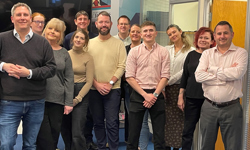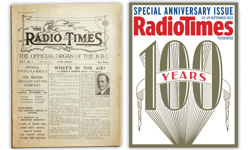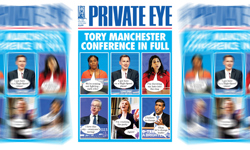Forgive me a small indulgence, but I’m going to start my column this issue with some quotes I’ve taken from an interview broadcast on an episode of Newsnight way back in 1999 – when magazines sold millions of copies a week and the publishing industry was as healthy as it has ever been.
In it, Jeremy Paxman was talking to a well-known artist about his career and perspective on the future. Conversation inevitably turned to online matters and the interviewee said the following (among other things) when questioned on his opinion of the internet.
“I find [the internet] a terribly exciting area… It’s becoming more and more about the audience: it’s almost like the artist has to accompany the audience and what the audience is doing.
“We are now living in total fragmentation. The potential of what the internet is going to do to society, both good and bad, is unimaginable. We’re on the cusp of something exhilarating and terrifying. The context and state of content is going to be so different to what we envisage at the moment, it will crush our idea of what mediums are all about. I don’t think we’ve seen the tip of the iceberg.”
That vision, from almost two decades ago (eons in tech terms) is as relevant today as it was then. If not more so. Let’s look in more detail at why, in relation to publishing.
1. Fragmentation
The expression of ‘total fragmentation’ is certainly accurate in publishing terms. As we all know, the internet has created publishing brands, and it has destroyed them. Since my last column was published, Zoo and FHM are no more. They fall as the likes of LAD Bible and Ben Phillips rise (if you don’t know who Ben Phillips is, Google him. You really should know; he’s a millennial making a ton of money).
It will continue to work that way. Indeed, the internet will probably crush the medium of print completely, eventually: certainly in terms of print defined as a single-platform, viable mass-commercial industry. You might scoff, but it won’t be long before we all have mega-speed data connections on our devices on the go, in big cities first, then further afield. You’ll be able to download big files – whatever content you like, aimed just at your specific interests, wherever you are. As algorithms and search improves, so you can target the precise content you want from a mass of sources.
You’ll be able to connect with your social network instantly, almost anywhere. Share anything, instantly. One of your biggest life-frustrations will be when you can’t, for whatever reason.
The internet has fragmented content production and distribution to such a degree that individuals are now our competitors. Individuals are brands. You don’t even need your own website now to publish content and potentially make money. You can use Facebook, Twitter, YouTube, Instagram, Pinterest. And more. Channels to audience are many. Those who know how to administer them effectively, few (by definition here, I mean make serious money out of it).
I still don’t think publishers have properly grasped all this. Multi-platform content strategies are vital if our industry is to survive and evolve, yet how many magazines have staff that are well trained in the area, who strategically release content cross-platforms in a way that’s beneficial to the brand? Who are prepared to properly immerse themselves in their online audience?
2. Accompanying the audience
One of the first lessons I learned as an editor in the formative years of my career was that we HAD to know what our audience wanted to read, if our magazine was to be successful. Recognising the importance of your audience and understanding them isn’t a new thing.
But now, it’s about so much more than that. It’s about recognising the multitudinous ways in which an audience finds content and the ways it wants to consume that content when discovered – whether that’s pics, video, soundbites, blogs, website, social… even print still.
It’s about recognising that if magazines are to survive, journalists need to be tech savvy, content savvy, platform savvy and be in touch with their audience all the time. They need to ‘accompany’ the audience, not dictate to it. Those words spoken in 1999 were so on the money. Whereas in the past, content producers (magazines) were the conductors of the orchestra, today the audience now conducts us, and if we don’t play the music they want when they want it, we will fail.
Too often today, I hear of and speak to journalists / editors who still feel themselves superior to and above having conversations with their readers, online or in person. Journos like that need to get over themselves.
3. Terrifying, exhilarating…
Yes, indeed. The digital space is as exhilarating and terrifying now as it was in 1999. Fantastic opportunities remain. Brands that embrace these, work at them, learn to understand their audience and accompany them on the journey, can still prosper. Brands that are lucky enough to have content creators that get all this and deliver, can still prosper.
It’s terribly exciting. It’s terribly terrifying. We’re still only at the tip of the iceberg. And in another twenty years, the state of content creation, distribution and consumption will be as different to now as 1999 is to today. We need to keep moving forwards, to keep reinventing ourselves through the wants and needs of the audience. Because, there will always be an audience.
But who was the artist interviewed by Paxman back in 1999? It was the legendary David Bowie. Re-read his quotes. Google ‘Paxman, Bowie, Newsnight’ and watch the interview for yourself. Marvel at the man’s extraordinary vision and lucidity. Oh to have someone like him heading the publishing industry in the UK today…












